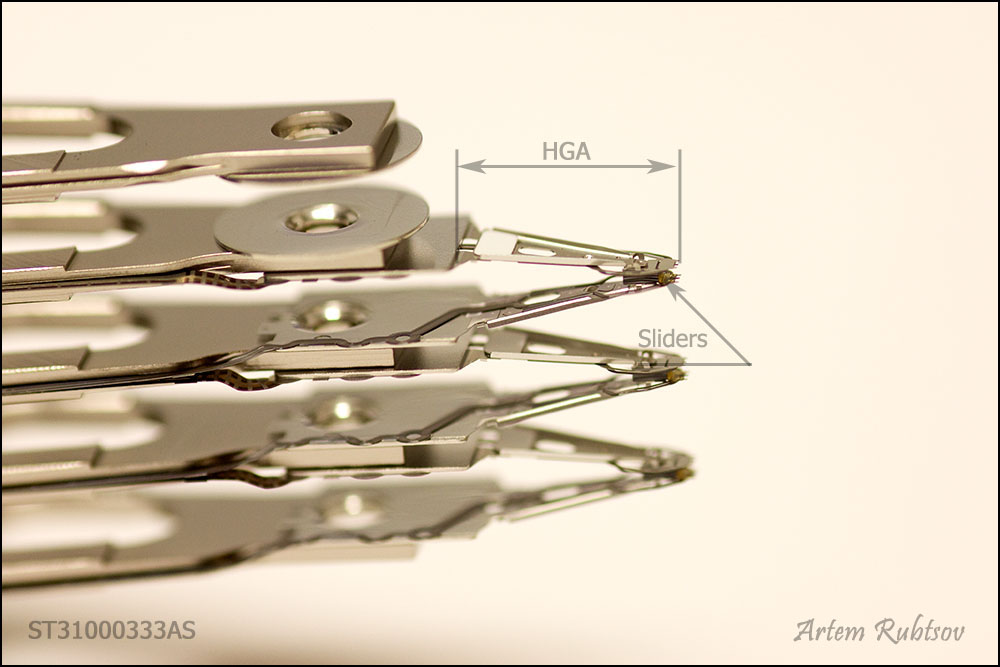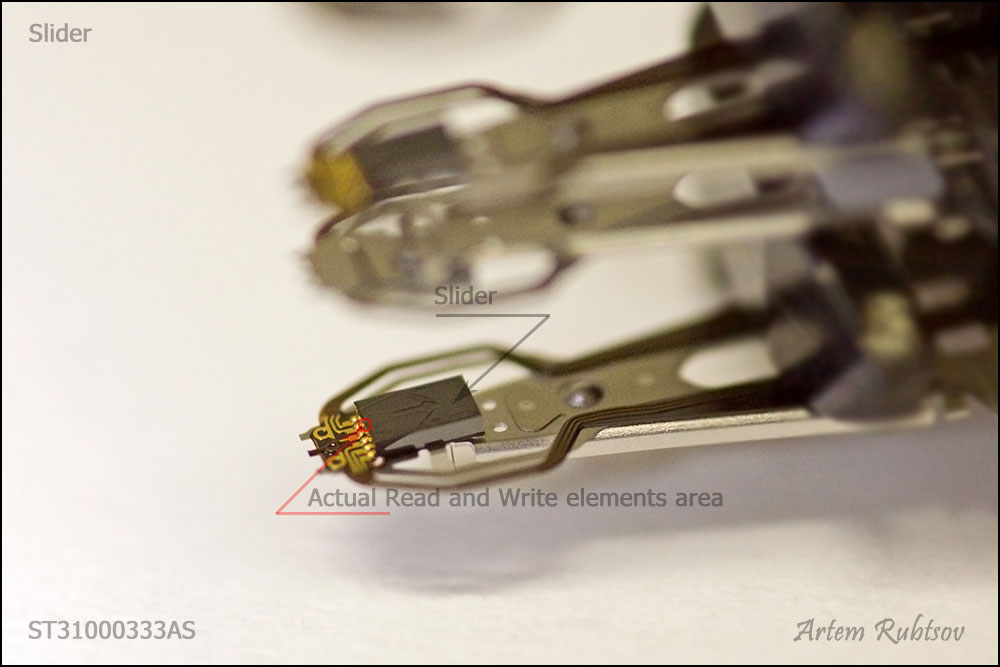HDD (Hard Disk Drive) is an electro-mechanical storage device that uses magnetism to store and retrieve data on spinning disks.
Components
- Platters
- Thin circular disks made of polished aluminium or glass and covered with several layers of different compounds including ferromagnetic layer which actually stores all the data
- Both sides of a platter can be used to store “different” data
- Usually a HDD has a stack of platters
- Read/Write Heads
- There are typically two heads per platter (one for each side) that read and write data by detecting and changing the magnetic patterns on the platters
- The heads are located on the edge of the sliders
- Actuator Arm
- This arm moves the read/write heads across the surface of the platters, allowing them to access different parts of the disk


HDD is a precise mechanism
Everything from the air quality inside to having aerodynamic ridges on the sliders are intricately designed to ensure stable performance
Data
- Data is stored on the platters in tiny magnetic regions
- These regions can be magnetised in two directions, representing binary 0s and 1s
- The read/write heads can both change the direction of the magnetic field (write) and detect a field’s direction (read)
- The surface of each platter is divided into concentric circles called tracks. Each track is further divided into sectors, which are like slices of a pie. The operating system organises data into these tracks and sectors to keep track of where everything is stored on the disk.